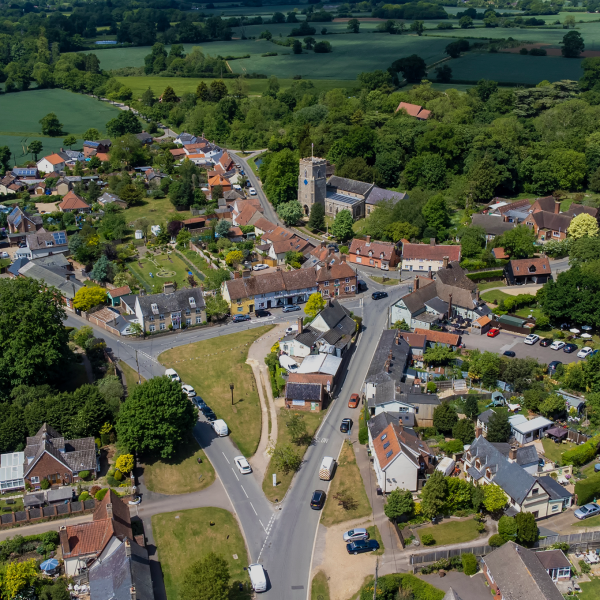Less than two weeks ago, some of us in England went to the polls for this year’s local elections. Reflecting the absurdly centralised and Westminster-focused nature of our political system, most of the commentary since then has obsessed about what these elections mean for the standing of the parties nationally and whether we have gleaned anything more about the likely shape of the next parliament.
The short answer to that question is no. Broadly speaking, the election results were in line with what we should have expected, given the opinion polls, which makes it even more depressing that we have heard so much about that subject and so little about local democracy and the challenges facing the councils themselves.
One reason is likely to be the utterly baffling complexity and illogicality of English local government. If you think you’re clear about what your local district/shire/unitary/borough council or metro mayor is responsible for, then you are in a small minority. Or more likely wrong. Our hodge-podge of different structures almost defies description, let alone rational explanation. Anand Menon, professor of European politics and director of UK in a Changing Europe at Kings College London, put this point rather nicely in the weekly Expert Factor podcast that he and I host along with Hannah White, of the Institute for Government. “It’s hard to avoid the impression that our arrangements for local government were written, while slightly inebriated, on the back of an envelope.”
You could say the same for the way in which we fund our local government. We are all familiar with council tax. I have written here before about its many absurdities. It is out of date and regressive. The tax payable on Buckingham Palace is similar to that on the average band C property across the country. It now funds about half of what local authorities spend, although that fraction varies a lot in different places. The rest is allocated to councils from a combination of local business rates and central government grants. The problem for local democracy is that there is now little relationship between the council tax rates in a local area and what the relevant authorities are able to deliver. That’s because the way in which the central grants are allocated has become essentially arbitrary.
Once upon a time, long, long ago, central government made a real effort to calculate what it thought each council would need, such that each could deliver broadly the same array and quality of services. A complex formula would take account of local tax-raising powers. Homes in Wokingham and Westminster are worth a lot more on average than those in Wolverhampton and Walsall, so the former two could raise more council tax per head of population than the latter two and hence should need less subsidy. The formula also would take account of numbers of people, numbers in poverty, the age structure of the population, the length of roads for which the council was responsible and so on. Not perfect, but a proper attempt at a rational system.
This system became increasingly, and deliberately, opaque under the last Labour government and has pretty much broken down entirely over the past 15 years. Cuts to local government funding in the 2010s effectively took no account of differing needs and hence fell more heavily on poorer and metropolitan areas. Moreover, the basis for allocating funding hasn’t been updated in years. Even the population figures used are more than a decade out of date and much of the data on which the allocations are based are considerably older than that. Hence what your council receives is probably more closely related to its needs 20 years ago than its present situation. The allocations are, in other words, increasingly random.
The government promised to put a new, up-to-date “fair” funding formula in place by 2019. That, though, has been kicked beyond the next election. Since there is no money to smooth any transition, I wouldn’t hold my breath. With each passing year, a return to rationality becomes ever harder. If you are reallocating within a fixed budget, you make some worse off. A return to rationality might require a return to spending growth.
Under those circumstances, it is hard for voters to have a real sense of how effective their local council is. Add to that the fact that getting on for two thirds of council spending goes on services that most of us, most of the time, don’t even see and the problem for local democracy gets bigger. This is close to the fraction of their budgets that many councils now find themselves spending on a combination of adult social care and children’s social services, a number that has been rising sharply. These are statutory responsibilities and are so necessary for the most vulnerable. Demand and costs have been going up fast.
At first blush, after the funding cuts of the 2010s it looks as though councils have done rather well recently. Core funding of English local councils will be about 11 per cent higher in real terms this year than it was three years ago. The trouble is it looks like their costs have grown faster still.
A little help may be at hand. In a completely unprecedented move, the government felt obliged to respond with a £600 million top-up earlier in 2024. A new and unheralded Office for Local Government has been set up with a remit to support councils and to share data and best practice.
One thing is for sure. All those new councillors elected a fortnight ago, from whichever party or none, will need all the help they can get. They have my gratitude for volunteering to serve and my very best wishes for success in the face of a tremendous shared challenge.










